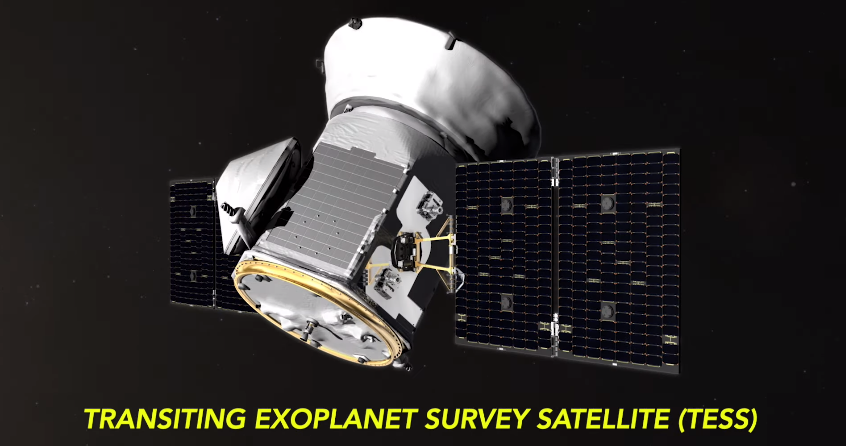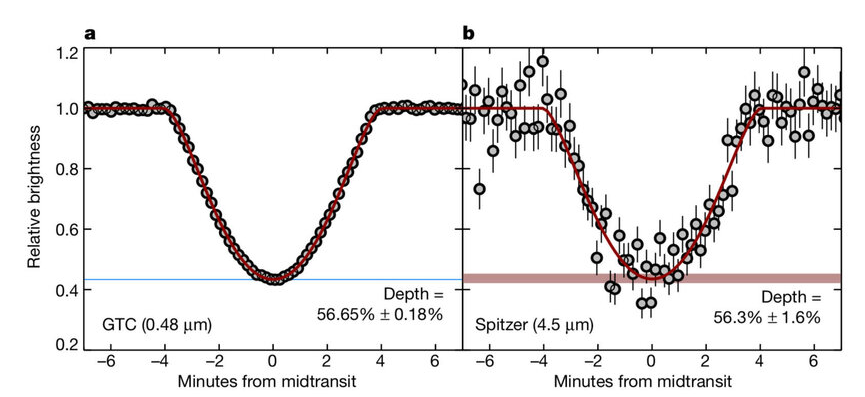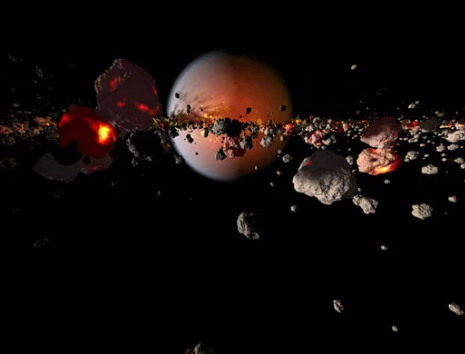Extra-solar planets or exoplanets or planets that orbit other stars have been discovered by astronomers in large numbers. Rather, 6 Exoplanets are getting closer and closer, with many planets orbiting the Sun. Our interest is that we can find planets like ours that completely complement our Earth or resemble our solar system, but there will also be very strange types of exoplanets in details
WD 1856+354 Planet
A strange system has been discovered with a planet orbiting a white dwarf called WD 1856+354. What is strange about it is not that this planet is orbiting a white dwarf, but that this planet, its size is larger than the white dwarf, so it is a strange type of system. This is the first time that astronomers have discovered a planet orbiting a white dwarf.
What is White Dwarf?
A White Dwarf is a Death Star that becomes the core of a star like our Sun. Our sun will also release most of the gases after six to seven billion years from today, after that a core of our sun will be left, the size of which will be almost the same as the earth and its density will be very high, but a white one. A dwarf has the same density as an atom. This is the future of our sun. White dwarfs stay cool forever.

WD 1856+354 System
In this system, the mass of the white dwarf is half that of our Sun, i.e. 0.5 solar mass, but the planet orbiting it is a planet about the size of Jupiter, ten times more massive than our Earth.

Now surprisingly, the star in this system is equal to our Earth and the planet around it is equal to our Jupiter. Now the mass of this planet is less, the main mass is in the white dwarf, but the diameter of the planet is much larger than its star, and not only this, but the entire planet is in a very close orbit to its white dwarf. Its distance is only three million kilometers. It takes only 34 hours to orbit the white dwarf. This planet was discovered by the TESS Telescope, whose full name is Transition Exoplanet Survey Satellite.
TESS Telescope

The main task of this telescope is to find exoplanets. This telescope discovers any planet through the eclipsing method. This is quite common method and easy method. When a dot comes in front of a planet, it is known that it is a planet. Now how big it is, it is known from that dot. The bigger the dot, the more massive the planet will be.
Discovering planets is quite difficult because planets have no light of their own, so when a planet passes in front of its star, the TESS Telescope will know that what has just passed in front of the planet is a planet. This is called Eclipsing Method.
Now the system in which the planet is is quite large in size and is quite close to its sun, so in that sense its dot will be quite large. It can mean that its light cannot be seen at all for a while. Here, the TESS Telescope observed that the planet’s dip was about 60%.

Rather, the automatic systems that detect whether there is a planet here or not dismissed it as to what kind of planet it is, which is experiencing a 60% dip, but later when astronomers looked again, it was a dip. It turns out that this is a strange type of system and it is a very large planet orbiting a white dwarf, which is why it has such a large dip.
How to Form this System
Like you, I had the same question, how did this system form and how did this big planet come so close to this white dwarf? In fact, normally astronomers think that there should be no planets near a white dwarf, that is why astronomers have not discovered planets around a white dwarf. This is because when a star like ours is about to die and become a red giant, it initially expands.
When our own star starts to expand after six to seven billion years from today, then the planets that will be near it like Mercury, Venus, Earth, Mars will probably sink inside the Sun, at that time no planet can be near it. Because he cannot escape. So why is the planet WD 1856+354 so close to a white dwarf!
Astronomers here say that this planet was probably formed towards the outer solar system like Jupiter and Saturn were formed in our solar system and there were other giant planets then when that star was near this planet during the red giant phase. At that time this planet WD 1856+354 came to the inside of this system and then overtime the gravity of the white dwarf pulled it towards itself and today the planet WD 1856+354 is in such a tight orbit.
The scientists who published the paper believe that this is the most likely scenario. Another theory is that this white dwarf is a binary star system close to it. We already know this, but we do not know whether this white dwarf is part of the same binary system or not, that is, it is a triple star system. Whether or not or perhaps it is a co-incident that the white dwarf is close to this binary star system. Here, it is possible that due to the gravity of this binary star system, the planet WD 1856+354 has destabilized and it has moved inside the white dwarf system.
Or the third possibility could be that a giant planet may have come close to this WD 1856+354 planet due to which the orbits of this planet have been destabilized and it has moved inside the white dwarf system.
We do not know which of these ideas is correct, but those who published this paper believe that WD 1856+354 may have been pushed into the white dwarf system due to the distraction of other giant planets. .

